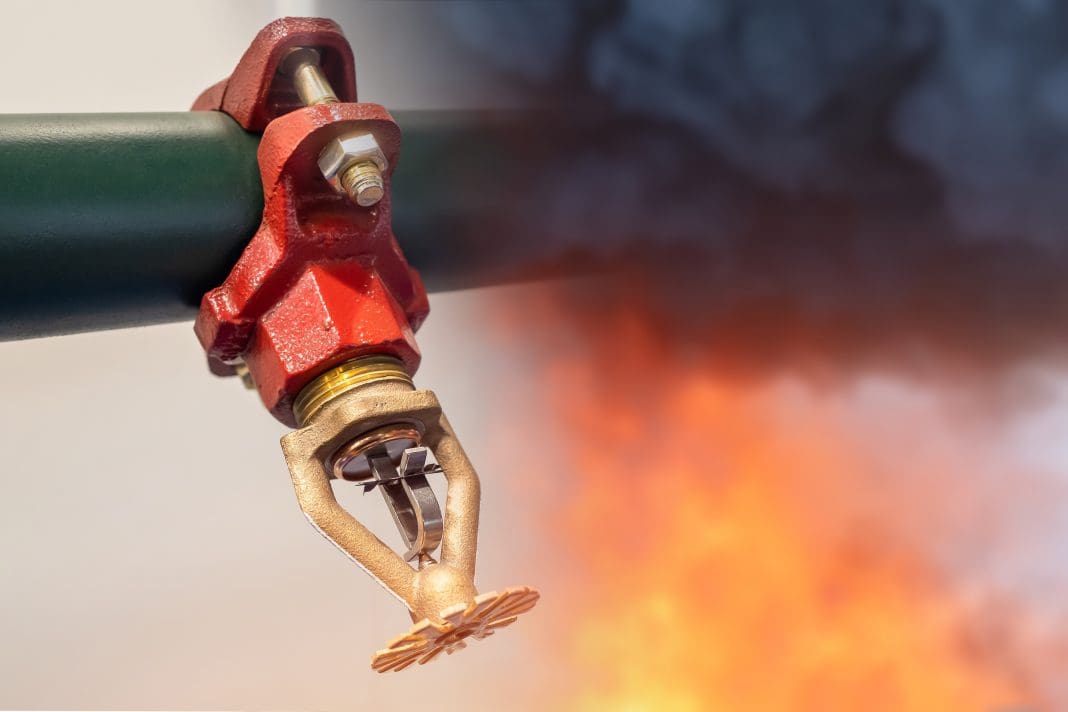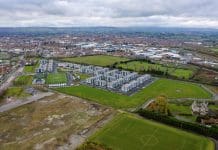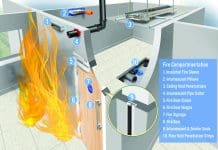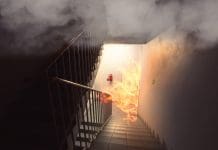In an era where building safety and sustainability are at the forefront of discussions across the real estate and construction sector, one would assume that fire safety measures would be well understood by industry professionals. However, there are continued gaps in knowledge about sprinkler systems among those who are involved in decisions about their provision, writes Iain Cox, chair of the Business Sprinkler Alliance
For years, the industry has grappled with a perception that sprinkler systems are solely for property protection. However, there has been a gradual shift towards people seeing their utility and ability as a life safety device too.
This marks a transition from sprinklers being primarily an insurance industry concern to a broader fire safety measure. Yet despite this progress, there is still a tendency in some markets to view sprinklers as a pure cost with a benefit in the realm of risk transfer and little thought on life safety, resilience or indeed sustainability.
Evolving regulations and lack of awareness
Our attendance at the recent 2024 UK’s Real Estate Investment & Infrastructure Forum (UKREiiF), an event that focuses on sustainable and transformational investment in the built environment, has highlighted this issue for us again.
It exposed a concerning lack of knowledge about sprinkler systems among built environment professionals.
Unsurprisingly, the changing regulatory environment gained attention, with concerns raised by developers about the lack of clarity in the new regulatory regime. The obvious outcome being delays in programme approvals with consequent deadline and project financing cost.
A surprising element was the undercurrent of struggles with true collaboration among stakeholders. The wrapper to this appeared to be the sharing of knowledge and the need to foster and grow trust between all parties: developers, consultants, financiers, lawyers and insurers. In this way, parties could mitigate potential fire risks and satisfy themselves that their schemes had the required level of fire safety.
It was interesting to note the role that sprinklers were positioned among this discussion as a tool to mitigate risk. However, on that same topic, one of the most surprising findings was the number of people across these stakeholder groups who admitted to discussing or making decisions about sprinklers without truly comprehending their benefits or how they operate.
Raising awareness to close the knowledge gap on sprinkler systems
The BSA has been aware for some time that a knowledge gap surrounding sprinkler systems existed. What is surprising is that this gap has persisted with those who actively claimed to be involved in decisions about their provision.
It’s baffling that such critical fire safety measures are being debated without a fundamental understanding of their capabilities and effectiveness. Especially when such knowledge is readily available and could be readily shared.
This lack of knowledge leads to choices made from an uninformed position rather than one of informed strength. It’s for those in positions of authority to seek expert advice and engage with knowledgeable professionals to make well-informed decisions, particularly in the field of fire safety. The discussion on the provision of sprinklers falls into that category and requires a level of competence.
The BSA also noted a lack of awareness regarding regulatory guidance, particularly when it came to the need for sprinklers.
There was a common assumption that hotels and large exhibition spaces are equipped with sprinklers. However, these buildings frequently lack them, despite the number of people within them.
Similarly, there seemed to be huge level of frustration arising from the requirements for sprinklers in permitted developments as they had residential floor levels over 11m and the original building lacked them. The implications of the regulatory guidance had been missed.
Sustainability vs fire safety
There has been a lot of focus and attention focused on schemes that measure the sustainability of projects. The sessions at UKREiiF covered this ground. In listening to these sessions, it sounded like a new form of accounting where all elements of carbon involved in the construction, operation and decommissioning of a project were weighed and measured.
Given the need to address the sustainability challenge, it is unsurprising that many stakeholders were making the case for the reuse of buildings and materials.
However, “shock” events like fire and damage to projects were not part of the thinking, or perhaps more precisely, not part of the new form of accounting.
Unfortunately, the potential for damage from a fire during the 50-year life of a building was not something that could be found in these programmes. One wonders if we are missing an opportunity or whether the “accounting” has a gap.
Given all that has come to pass, one would think these decision-makers would close these gaps. It is now required that responsible actors focus on the importance of fire safety. Within that, the multitude of benefits sprinklers provide for life safety, asset protection and environmental protection, need to be clear and the misconceptions addressed.
Be sure to consider the role sprinkler systems can play in you project
When considering sprinkler systems, it’s vital to apply careful thought, seek expert opinions and recognise their dual role in protecting both property and lives. Sprinklers should be viewed as a long-term investment in safety, not merely a one-time expense.
By exposing the gaps in regulatory guidance and highlighting the consequences of neglecting fire safety measures, the BSA hopes to inspire a more informed and responsible approach to sprinkler installation across UK business buildings.




![[Video] Enhancing safety with fire doors: A case study of Marina Care Home](https://www.pbctoday.co.uk/news/wp-content/uploads/2025/06/maxresdefault-218x150.jpg)



![[VIDEO] Making DorTrak reports easy to read with Fireco Inspecting fire doors at Fireco, firedoor technology, 2023](https://www.pbctoday.co.uk/news/wp-content/uploads/2024/04/JPZ_2364-web-218x150.jpg)





![[VIDEO]What to expect when you’re inspecting: Using DorTrak for fire door inspections](https://www.pbctoday.co.uk/news/wp-content/uploads/2025/02/maxresdefault-218x150.jpg)